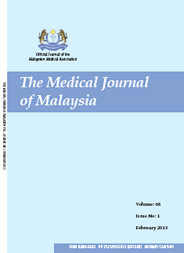MJM, Vol 70 Supplement 1 September 2015
Outdoor air pollution and cardiovascular disease:
an additional opportunity for intervention
Centre for Air quality and health Research and evaluation (CAR) and School of Public Health and Community Medicine, University of New South Wales
ABSTRACT
In 2012, outdoor air pollution was responsible for an estimated 3.7 million premature deaths globally, with 70% of these deaths occurring in the Western Pacific and South East Asian regions. Most deaths were due to ischaemic heart disease and stroke. In the European Union, where outdoor air pollution levels are generally low, it is estimated that air pollution has reduced the average life expectancy by about nine months.
The strongest epidemiological evidence for adverse health impacts of air pollution is for effects on the cardiovascular system. Outdoor particulate matter is associated with increased heart rate variability, development of atherosclerosis, myocardial ischaemia, myocardial infarction and premature deaths. The evidence is consistent with a causal relationship between air pollution exposure and cardiovascular morbidity and mortality.
Despite the increasing evidence for the cardiovascular effects of air pollution, it has not, to date, had the same recognition as an important modifiable risk factor for cardiovascular disease morbidity and mortality compared to more traditional modifiable risk factors for cardiovascular disease such as cigarette smoking and hypertension. It is now the right time to re-evaluate the contribution of air pollution to cardiovascular disease and explore opportunities for intervention.
The most effective approaches to reducing exposure to air pollution will continue to be population-based air pollution control strategies that reduce the exposure to air pollution for as many people as possible. However, there is also an important role for the medical profession, both individually and organisationally, to advocate for cleaner air.
